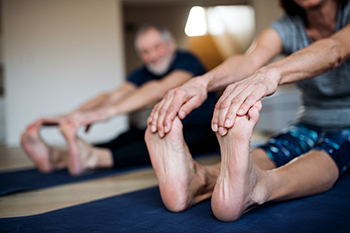The Importance of Dorsiflexion
Tuesday, 17 May 2022 00:00
Flexing the foot is not something most people spend a lot of time thinking about until they can’t flex their foot. The process of raising the foot in the direction of the shin, known as dorsiflexion, comes naturally as you learn to walk. It happens as you push off the ground whenever you take a step. Dorsiflexion is the result of using the muscles and tendons in the front of the leg and depends on the deep peroneal nerve. If this nerve is damaged, you may be unable to flex your foot. Other possible causes of poor dorsiflexion include a tightened ankle joint, tight calf muscles, or an ankle injury that has not properly healed. Further, injuries to other parts of the body such as the knee, hip, or back, can affect dorsiflexion. Conversely, any problem with dorsiflexion can cause problems moving upward through the body, all the way to the shoulders. Exercises to stretch the calf muscles and strengthen the ankle joint are ways to improve dorsiflexion. If you are unable to flex your foot fully, or at all, please see a podiatrist for an examination, diagnosis, and treatment options.
If you have any concerns about your feet, contact Dr. Mark Spier from Maryland. Our doctor can provide the care you need to keep you pain-free and on your feet.
Biomechanics in Podiatry
Podiatric biomechanics is a particular sector of specialty podiatry with licensed practitioners who are trained to diagnose and treat conditions affecting the foot, ankle and lower leg. Biomechanics deals with the forces that act against the body, causing an interference with the biological structures. It focuses on the movement of the ankle, the foot and the forces that interact with them.
A History of Biomechanics
- Biomechanics dates back to the BC era in Egypt where evidence of professional foot care has been recorded.
- In 1974, biomechanics gained a higher profile from the studies of Merton Root, who claimed that by changing or controlling the forces between the ankle and the foot, corrections or conditions could be implemented to gain strength and coordination in the area.
Modern technological improvements are based on past theories and therapeutic processes that provide a better understanding of podiatric concepts for biomechanics. Computers can provide accurate information about the forces and patterns of the feet and lower legs.
Understanding biomechanics of the feet can help improve and eliminate pain, stopping further stress to the foot.
If you have any questions please feel free to contact one of our offices located in Columbia and Reisterstown, MD . We offer the newest diagnostic and treatment technologies for all your foot and ankle needs.









